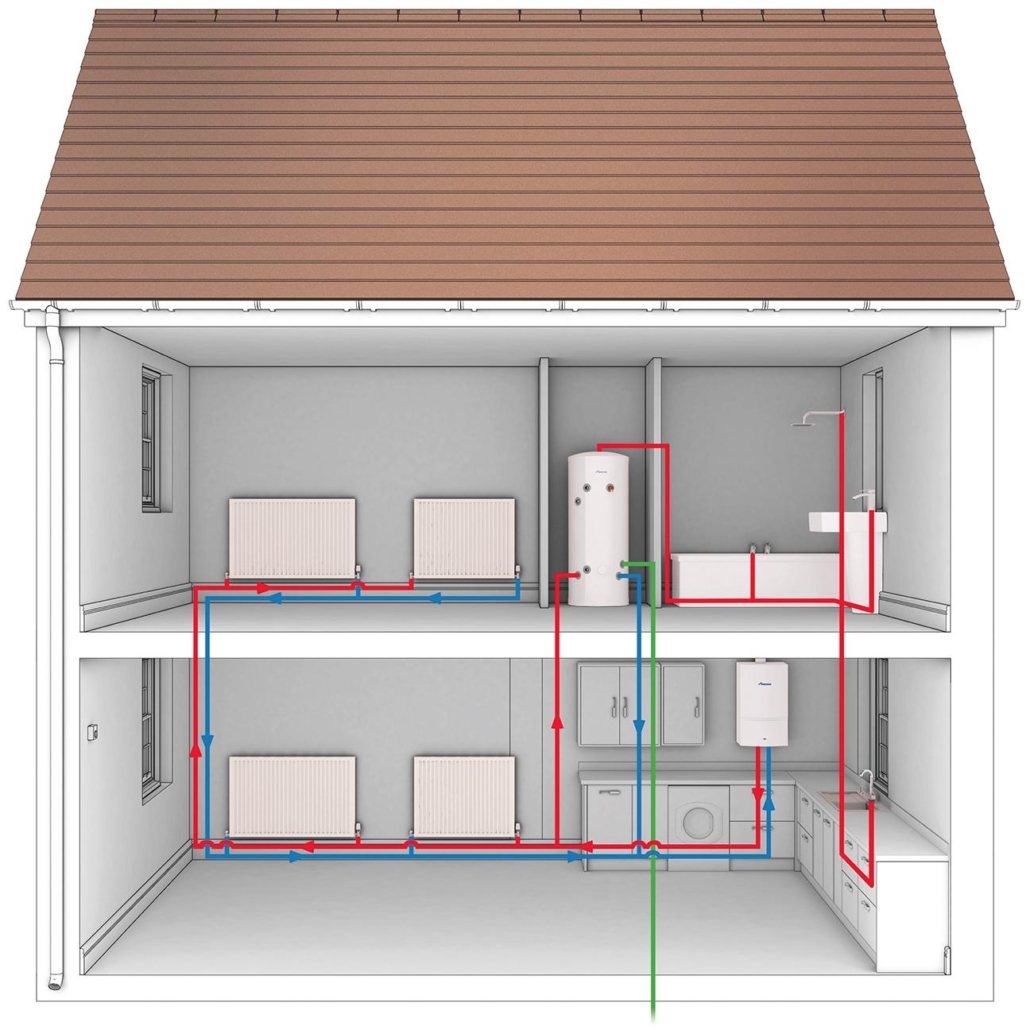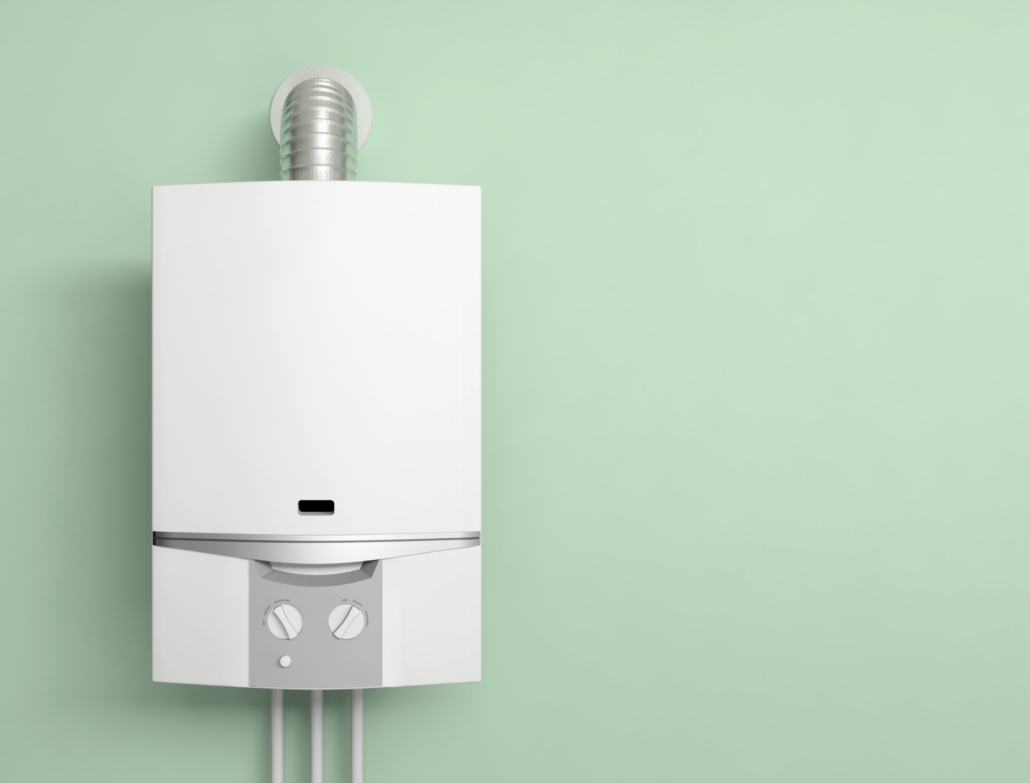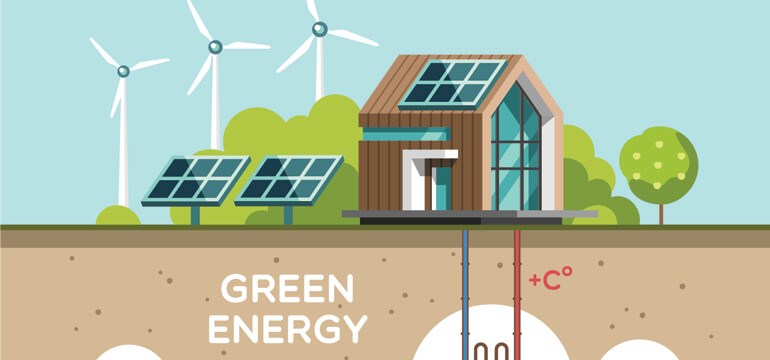Central heating systems explained
What is a central heating system?

A central heating system is a popular way of keeping homes warm in the UK. It works by using a boiler, which is connected to pipes that distribute heat throughout the home. This type of system allows you to control temperatures throughout different rooms in your house, as well as providing hot water for baths and showers.
Central heating systems vary in design and setup so it’s important to choose one that meets your needs; from gas boilers, electric boilers and combination boilers to more efficient renewable technologies such as air source pumps and solar thermal systems. Professional installation is recommended for all types of central heating systems, allowing you to get the most efficient use out of them.
What are the different types of central heating systems?
Different types of central heating systems have been developed over the years, each offering their own advantages and disadvantages. Wet central heating is one of the most popular systems used in Britain. This system relies on hot water being pumped through pipes to radiators placed around a home, releasing heat into the air. Alternatively, warm air central heating works by taking air from outside, warming it up and circulating it throughout a property via a series of vents. Storage heaters are also used across the UK; these use electricity to store up heat overnight during off-peak hours before releasing it during peak times to reduce costs for homeowners. Lastly, district heating is becoming increasingly popular; this involves an entire block of buildings sharing one large boiler which provides hot water and supplies warmth to all properties connected to it at once.
What is a wet central heating system?
A wet central heating system is one of the most popular home heating solutions in UK homes. It works by running hot water from a boiler through a series of pipes to radiators around the house. The heat generated by these radiators will then warm up the air in each room which provides comfortable temperatures throughout the home.
Unlike other types of home heating systems, a wet central heating system only requires one unit – that’s why it’s so popular for both residential and commercial use. It also uses less energy than other solutions, making it an affordable and eco-friendly option for all households looking to save money on their energy bills. Additionally, this type of heating system is easy to control with thermostats and timers; meaning you can keep your home at just the right temperature all year round without wasting any energy unnecessarily.
What is a warm air central heating system?
A warm air central heating system is a type of home heating system commonly used in the United Kingdom. This system utilizes an integrated furnace that uses gas, oil, or electricity to heat the air within a property. Warm air is then piped through vents located throughout the building and distributed into individual rooms using fans.
This type of central heating system allows for precise control over the temperature of each room in a property whilst also providing efficient and cost-effective heating for all occupants. The warm air produced by this method of heating does not require additional humidity as other methods may do, thus making it an ideal solution for those who suffer from respiratory ailments such as asthma or allergies. Additionally, warm air central heating systems are relatively easy to install and maintain; however, they must be regularly serviced to ensure maximum efficiency and performance over time.
What is a storage heater system?
This type of system works by using electricity to heat up large slabs of ceramic material, which are then used to store the heat and release it into the room over time. This makes it an ideal way to keep your home warm and comfortable during those cold winter months.
The main advantage of this type of heating system is its low running costs. As the heated slabs retain their heat for long periods, they require less energy than other types of central heating systems. Additionally, storage heater systems can be very cost-effective as they only draw power when needed – usually overnight when energy rates are often at their lowest. Furthermore, installation costs tend to be lower than other forms of central heating, making them a great option for those on a budget looking for efficient home heating solutions.
What is a district heating system?
A district heating system is a common type of centralised heating system used in the UK. It works by providing hot water to many buildings, such as homes and businesses, from one centralised point. The hot water is typically generated either at a combined heat and power plant (CHP) or from a large-scale boiler using renewable energy sources such as biomass, geothermal energy, or solar thermal.
The advantages of district heating systems are numerous; they are more efficient than individual boilers working independently, can provide hot water on demand with no interruption to service, and can use sustainable sources of energy which reduces its environmental impact. Additionally, most systems use automated monitoring technology to ensure that the temperature remains consistent within each building throughout the year.
District heating systems are becoming increasingly popular in the UK as people continue to search for ways to reduce their carbon footprint.
Most common central heating in the UK
A boiler-based central heating system utilizes boilers and pipes to move hot water or steam around a building’s interior. They can use either natural gas or oil as fuel sources, and they typically operate by transferring heat generated from burning fuel into radiators inside each room. Boilers need to be serviced regularly and replaced periodically to ensure efficiency and safety, but they are generally reliable and easy to maintain on an ongoing basis.
3 main boiler systems

Boiler systems are a vital part of any home, providing hot water and central heating. In the UK, there are three main types of boilers for homeowners to choose from. These include combi boilers, system boilers and conventional boilers. Each one has different advantages depending on your individual needs.
Combi boiler systems are becoming increasingly popular due to their small size and efficient operation, as they provide both hot water and central heating without needing a storage tank or cylinder. System boilers meanwhile can be used in homes with low hot water demand as they contain an internal storage tank that supplies multiple outlets at once, such as showers or taps. Conventional boiler systems require additional tanks and cylinders in order to deliver hot water, but can offer better control over temperatures than other models due to their separate controls for each outlet.
combi boilers
Combi boilers are one of the most popular types of heating systems in the UK. These boilers offer a combination of both central heating and hot water, providing an efficient and space-saving solution for homes that don’t have enough room for separate units.
A combi boiler works by taking cold water from the mains supply and passing it through a heat exchanger to raise its temperature. The heated water is then sent directly to taps as hot water when required, or stored in a cylinder for use with showers and other appliances. At the same time, the combi boiler also sends hot water to radiators around the house to provide central heating. This process allows users to quickly adjust their individual home temperatures without having to wait for a storage tank’s contents to heat up again.
system boilers
System boilers are increasingly popular in the UK due to their cost-effectiveness and ease of installation. System boilers, also known as sealed systems, provide both heat and hot water directly from the boiler which eliminates the need for additional tanks and cylinders. This makes them highly efficient and reliable – perfect for small to medium-sized households.
System boilers work by providing hot water on demand through a network of pipes that run throughout your property. The boiler itself is connected to a cold water tank located in your loft or airing cupboard, while an expansion vessel is attached to manage pressure levels within the system. Once switched on, the boiler begins to heat up the cold water until it reaches its optimum temperature, before being delivered via taps around your home.
conventional boilers
Conventional boilers have been heating homes in the UK for years and remain one of the most popular options for domestic hot water and central heating systems. The conventional boiler system is simple, reliable and efficient, making it an ideal choice for households across the country.
A conventional boiler consists of three main components: a cold water storage tank in the loft that supplies water to the boiler; a hot water cylinder; and most importantly, the boiler itself which heats up both hot and cold water. When switched on, cold mains water enters through a pipe into the boiler where it is heated by either gas or oil before being sent out to radiators throughout your home. Any unused heat is then stored in the hot water cylinder ready for when you need it.
Renewable heating systems

Renewable heating systems are becoming increasingly popular in the UK, as they can provide a cost-effective and environmentally friendly way to heat homes. In recent years, the government has been encouraging citizens to switch to renewable energy sources such as solar panels, ground-source heat pumps and air-source heat pumps. So what exactly are renewable heating systems and how do they work?
Renewable heating systems are an alternative to traditional fossil fuel heating options such as gas or oil boilers. They use natural resources found in the environment such as the sun, wind and earth’s own temperature for their energy needs. Solar panels capture energy from sunlight whilst ground source heat pumps absorb warmth from the earth. They then convert it into a usable form of energy which is used to power central heating systems in homes across the UK.
Ground source heat pumps
Ground source heat pumps (GSHPs) offer a renewable way to heat homes and businesses in the UK. This type of system is becoming increasingly popular, as it provides efficient, cost-effective heating for any property.
GSHPs absorb heat from underground pipes that are buried in the garden or lawn. A pump then circulates a mixture of antifreeze liquid and water through these pipes; when this happens, natural warmth is pulled from the ground and passed into the building’s heating system. As well as providing an energy-saving solution, GSHPs require less space than traditional boilers – making them perfect for properties with limited outdoor space.
GSHPs can also be used to cool buildings during summer months by reversing the process and pumping warm air outside instead of inside.
Air source heat pumps
ASHPs work by transferring heat from one place to another, absorbing it from the outside air and releasing it into a building. This transfer process is more efficient than traditional heating methods such as gas or oil boilers and can help save money on fuel bills compared to other traditional heating systems.
ASHPs can be used to provide hot water, space heating or both depending on the needs of individuals or businesses. They are suitable for domestic and commercial properties alike, with the technology being designed for easy installation within existing buildings. The long term savings that ASHPs offer make them an attractive alternative to conventional forms of energy production, as well as being a more sustainable option for those looking towards a greener future.
Biomass boilers
Biomass boiler systems in the UK are being increasingly considered as a viable renewable energy source. These systems provide a cleaner, greener alternative to traditional fossil fuel sources, while also helping to reduce emissions and improve air quality. With government initiatives in place to help promote the use of biomass boilers, now is the time to consider this renewable energy choice for your home or business.
Biomass boilers function by burning organic matter such as wood chips, pellets or logs. This organic material is then converted into heat energy used to warm up water that can be distributed throughout a building via radiators and/or underfloor heating systems. Additionally, they can be connected with existing hot water tanks and other forms of central heating systems. These boilers have been designed with advanced technology allowing them to operate efficiently and economically over long periods of time without much maintenance required from the user.
Electric boilers
Electric boilers have been around for many years, and they have become increasingly popular in the UK as a result of their energy efficiency. Electric boilers use electricity to heat up water that is transferred to radiators or underfloor heating systems. This provides a clean, efficient and reliable form of heating without having to burn fossil fuels.
Electric boilers are incredibly easy to install and maintain since they don’t need fuel delivery, flues or chimneys, meaning less disruption during installation compared with traditional boilers. They are also smaller than conventional gas boiler systems which makes them ideal for homes with limited space. Depending on their size and type electric boilers can provide hot water for both domestic and commercial uses such as swimming pools and large buildings.
In conclusion
It is important to understand the basic workings of a central heating system, as well as the different types of boilers and central heating systems available. It is also important to consider renewable heating systems when making decisions about installing or replacing a central heating system. Knowing the advantages and disadvantages of each system can help ensure that you make an informed decision for your home or business. Investing in a reliable and efficient central heating system will pay dividends in terms of reduced energy bills and improved comfort.
For more information on plumbing and heating check out our guide here
